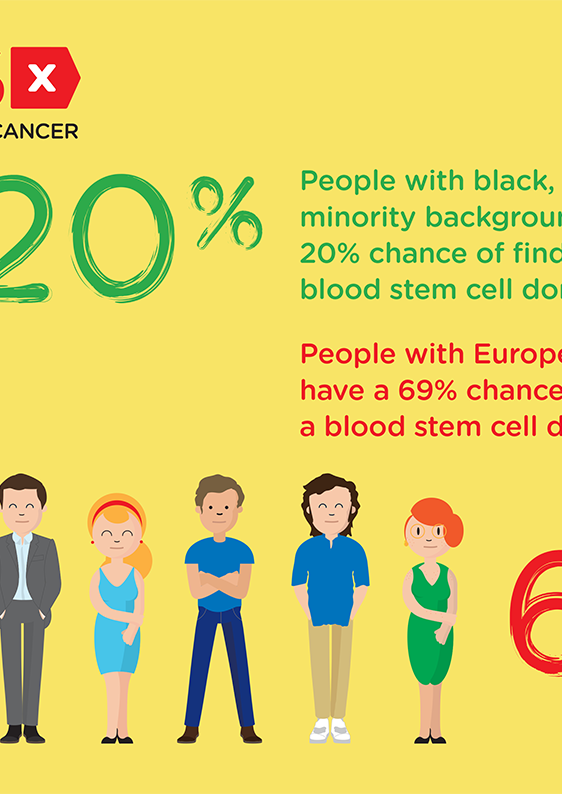Joe appeals for more black people to become potential lifesavers
dkms_black_hla-1.jpg October is Black History Month and we are shining a spotlight on the need to diversify the registry and encourage people from a wide range of backgrounds to register as blood stem cell donors. Currently, donors from minority ethnic backgrounds make up just 13% of the UK aligned stem cell registry. This means that, for some people, finding a suitable matching donor is much more difficult than for others. Our goal as a charity has always been to provide a second chance at life to as many people as possible.
October is Black History Month and we are shining a spotlight on the need to diversify the registry and encourage people from a wide range of backgrounds to register as blood stem cell donors.
Currently, donors from minority ethnic backgrounds make up just 13% of the UK aligned stem cell registry. This means that, for some people, finding a suitable matching donor is much more difficult than for others.
Our goal as a charity has always been to provide a second chance at life to as many people as possible.
This is why we register people up to the age of 55, and focus on increasing the pool of donors so that people with blood cancers and disorders – especially those with rare tissue types – have the best possible chance of finding a match
Lifesaver-in-waiting Joseph ‘Joe’ Battiste, who works for Jaguar Land Rover wanted to share his story to encourage others to follow in his footsteps.
Lifesaver-in-waiting Joe shares his story
Joe Battiste at work in Jaguar Land Rover
I was watching telly last May and saw an appeal for someone I instantly recognised. It was Delroy from the TV series ‘Can’t Pay? We’ll Take it Away!’
The appeal said he needed a blood stem cell transplant. At the time I didn’t know what that was exactly. My wife and I were taken aback by Delroy’s difficult search.
I'm 52 years old and I couldn’t get out of my head that this person could be the same age as me, and could die because of the lack of black blood stem cell donors.
I remember the statistics - they were horrible and depressing and sounded like huge alarm bells of inequality.
They said patients from black, Asian or other minority backgrounds have just a 20% chance of finding the best possible matching stem cell donor match, compared with69% for white Northern Europeans.

After hearing Delroy’s appeal I contacted DKMS through their website and ordered a swab kit. I received it promptly in the post and quickly returned it.
In April this year I was contacted by DKMS and told the news that I had longed to hear. I was a match for someone in need!
Unfortunately, I was then contacted by DKMS and told that there was a more suitable match for my patient.
Of course, I was a little disappointed that I was unable to donate on this occasion, but I was happy to hear the patient had found an even closer match.
I will remain on the registry until my 61st birthday, so fingers crossed I will be called up again and have the opportunity to donate my blood stem cells.
Until then, I will keep myself occupied with work, while sparing a thought for the many people affected by blood cancer.
My wife was really looking forward to me donating my blood stem cells. Not only could I have potentially saved someone’s life, it would have also been one of the only times I’d have broken my routine of washing the car every single day.
How you can help
Anyone between the ages of 17-55 and in good general health can go on standby potentially to save a life. Check your eligibility and sign up as a potential blood stem cell donor today.
Find out how you can volunteer with DKMS.